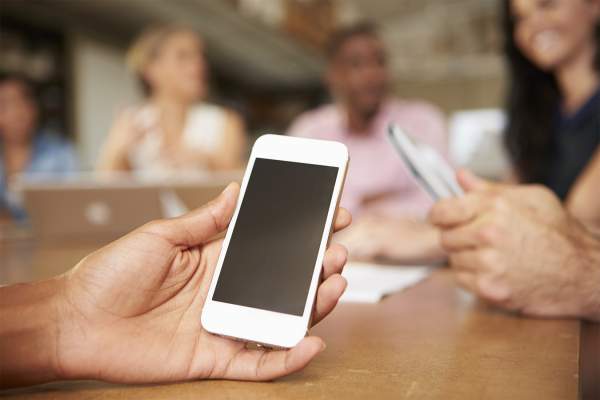Taking Your Fundraising Game to the Next Level: What nonprofits need to know about Pokémon Go and augmented reality

Have you suddenly started to see groups of people congregating in public spaces, their eyes glued to their phones? Perhaps you’ve even almost been run over by one of these crowds, their phones held aloft and mumbling something about Snorlax. Or maybe you’ve wondered why your kids are suddenly anxious to go outside all day, even in the extreme heat. Well, whether you know it or not, you’ve been exposed to the new video game craze, Pokémon Go.
Maybe your kids or grandkids are into it. Maybe your grandmother is into it. Heck, maybe even you’re into it!

If so, you’re just one of over 65 million users — that’s more than Tinder and Twitter! In just a few short weeks, Pokémon Go was making $1.6 million a day on in-app purchases, and young and old alike are spending more timeplaying it daily than they spend on Facebook, Instagram, and Snapchat. And unlike other video games, which thrive in dark basements filled with Mountain Dew and Pringles, Pokémon users are forced to go outside, get exercise, and (gasp!) be social. If you’ve been blissfully living under a rock and have no idea how Pokémon Go works, I encourage you to do a little research into the fascinating world (or just ask one of the people wandering around looking at their phone to show you how it works!). Basically, it involves players (Pokémon trainers) catching and training Pokémon (pocket + monsters), which appear in their real world surroundings when viewed through the screen of their phone. It’s a type of technology called augmented reality, cousin to virtual reality.
Augmented Reality
In virtual reality, you are privy to a whole new world, one you cannot see without your virtual reality glasses or headset. Augmented reality, on the other hand, combines your real world with the virtual world by “overlay[ing] digital imagery on a person’s view of the real world, using a smart phone screen or a headset.” So as players walk through the real world and view it through their phone, they see various Pokémon pop up that they can catch, train, and eventually battle with other trainers.
Back in 2012, augmented reality was a hot-button item in the fundraising world. Many touted it as the next big digital trend in fundraising. Even the Obama campaign got in on the action during his reelection: When users viewed a $5 bill through a phone app, an augmented reality experience appeared that allowed viewers to donate, volunteer, watch videos, or even “high five Obama.”
But augmented reality never really became the “next big thing,” and one of the most highly anticipated augmented reality experiences, Google Glass, was a flop. Meanwhile, the idea of virtual reality took its place. In fact, if you Google “augmented reality” and take away any reference from the last month or so to Pokémon Go, you’ll be left looking at pages of articles that were written in 2012. If you search virtual reality, however, you will see current articles about the future of virtual reality in advertising, fundraising, political campaigning, gaming, etc.
But with the advent of Pokémon Go, augmented reality has been brought back into the spotlight in a matter of days. And everyone from businesses to international politicians has been getting in on the action. Both young and old can’t get enough.
So how has Pokémon Go used augmented reality in a way that has been so much more successful than other attempts to utilize the same technology? And how can nonprofits utilize these same ideas to make augmented reality work for them in the near future?
- Pokémon Go utilizes equipment most people already have. Pokémon Go appeals to so many people because it requires no special technology — just a smart phone, which most players already have. No glasses, no special suits, no heavy, expensive VR headsets. Pokémon Go is just a (free) download away. Though many are excited about the prospect of virtual reality in the fundraising world, the reality is that it will be years before affordable virtual reality headsets are actually in people’s hands. Yes, there are affordable versions (like Google Cardboard), but most people don’t’ have a good enough reason to purchase one yet, and even if they did, they wouldn’t access it as often as their phones. While it’s exciting to look to the future, it’s also exciting that right now,donors have access to the incredible world of augmented reality already in their hands! Even though augmented reality never took off in 2012, now is the time to start brainstorming ways to harness it’s potential.
- Pokémon Go makes augmented reality fun. So fun, in fact, that players young and old are willing to download the app and walk around in this scorching summer heat to enjoy it. Pokémon Go’s purpose is to seamlessly blend 90’s nostalgia (the Japanese characters have been around for 20 years!) with cutting-edge technology to create an entertaining and addicting experience — and it has succeeded immensely. Now, nonprofits don’t always deal in “fun,” and there’s no need to “gamify” the donation process. But when considering use of augmented reality, it must serve a purpose that could not be better served in another channel. For example, harkening back to Obama’s use of it in 2012: Why would anyone be motivated to download an entirely new app so that they can point it at a $5 bill, just to get information they could easily find on an online browser? It had no real use; it was just for show. Nonprofits must get past the gimmicky stage of augmented reality in order to find something that moves people in a way that nothing else can.
- Pokémon Go made augmented reality a social, active experience. I’ve heard countless stories of Pokémon Go inspiring new friendships (even romance!), as well as helping people struggling with social anxiety to get over their fears. People who don’t necessarily like exercise are finding themselves up off the couch and exploring their city with their peers. Nonprofits, especially, should be aiming for the creation of a social experience that draws people together toward a common goal. Pokémon Go is doing just that! Finding a way to use augmented reality to bring people together for a real-world cause would be a game changer for fundraising.
It seems that, thanks to Pokémon Go, perhaps this is the year that augmented reality really will be the next big thing. And it will be exciting in the year to come to see how both businesses and nonprofits use this technology for marketing, reaching out to donors or customers, and expanding their base. In the meantime, however, here are a few ideas of how nonprofits can use the augmented reality of Pokémon Go to their benefit

- Use it to draw awareness to your cause. Everyone from museums to national parksis getting in on the Pokémon Go action, using it to attract visitors who otherwise wouldn’t be there. If your location is a gym or Pokestop(or even if you’re near one), have information available about your mission or how to volunteer — and take time to build relationships with those who wander in! You can intensify the amount of Pokémon present at your location by using a “lure,” an in-game purchase that attracts Pokémon (and consequently, visitors) to your site for 30 minutes. Can you image the impact this would have if used during an event, presentation, or fundraising drive?
- Take advantage of the large groups roaming around. Have you ever thought that if you could just get enough people together, your organization would be unstoppable? Well take advantage of the hoards of Pokémon trainers. Over 2,000 people gathered in Sydney to do a Pokémon Walk around the Opera House — and similar gatherings are happening all around the country! This idea could easily be modified for fundraising purposes. Or think like Macmillan Cancer Support, who shared popular Pokémon hunting spots in their city and then made sure their bucket collectors were stationed there. Wherever large groups are congregating, make sure your organization is finding a way to be present there, too.
- Find creative ways to link your cause to the game. With a little imagination, you can find a way to connect your organization to Pokémon Go in some way. Nonprofits like Charity Miles and WoofTrax, apps that donate to charities based on your accumulated steps, are encouraging Pokémon Go players to walk for charity. Or if you’re lucky enough that your organization has a connection with a specific Pokémon, leverage that connection to raise awareness. UK charity Brooke, which advocates for working horses and donkeys, connected their cause to Ponyta and Rapidash, horse-like Pokémon (see below). No matter how far the stretch, people will appreciate and find humor in the effort.

via thebrooke.org
Even if Pokémon Go crashes and burns after a few months (and I don’t think it will with brands and businesses soon being able to sponsor gyms and Pokestops), augmented reality is now part of the mainstream. So loosen up and have a little fun with it! Start thinking of how you can appeal to the new audience, and with a little creativity, you’ll soon be converting Pokémon trainers to donors and volunteers.
